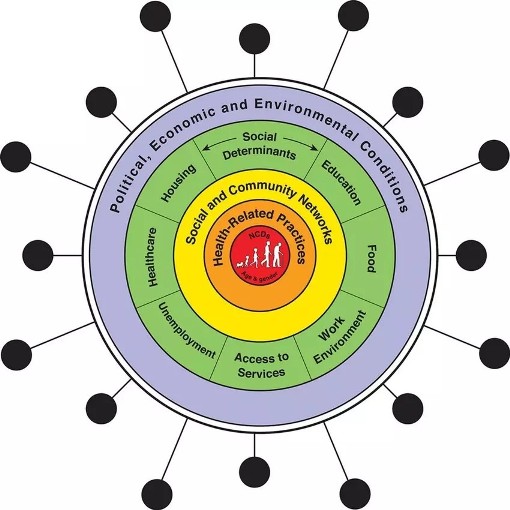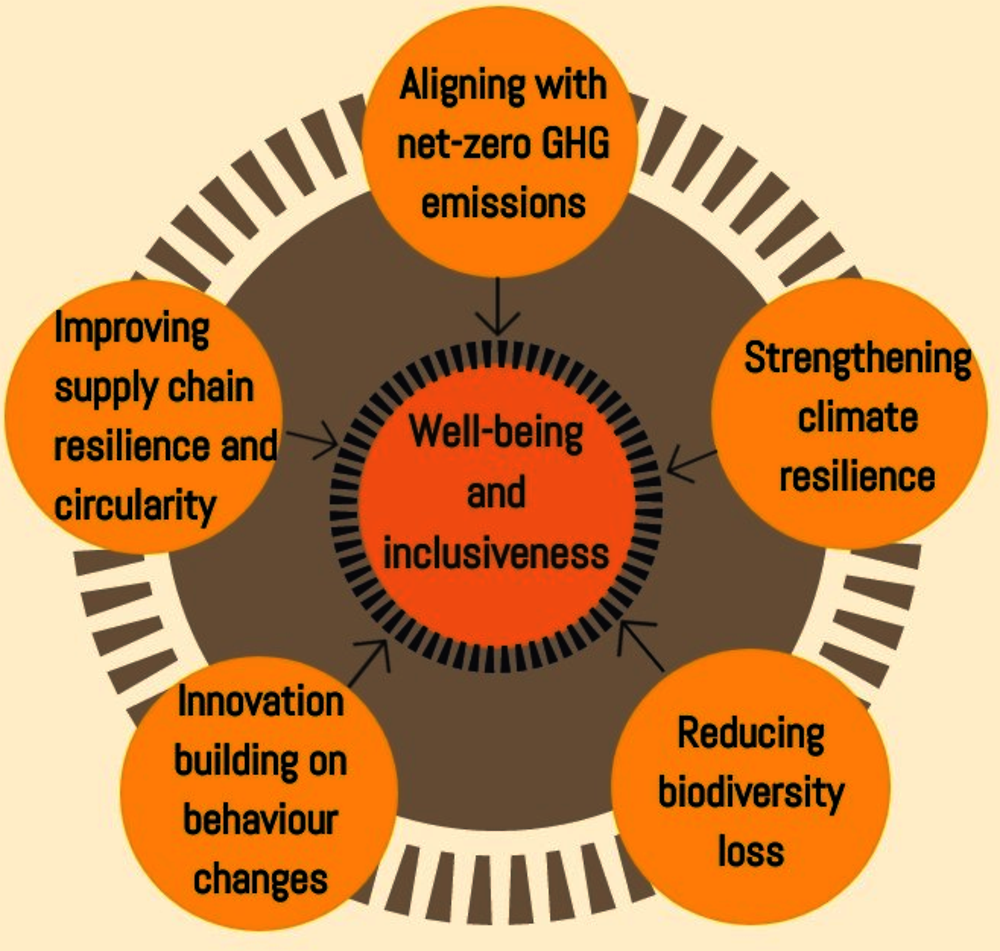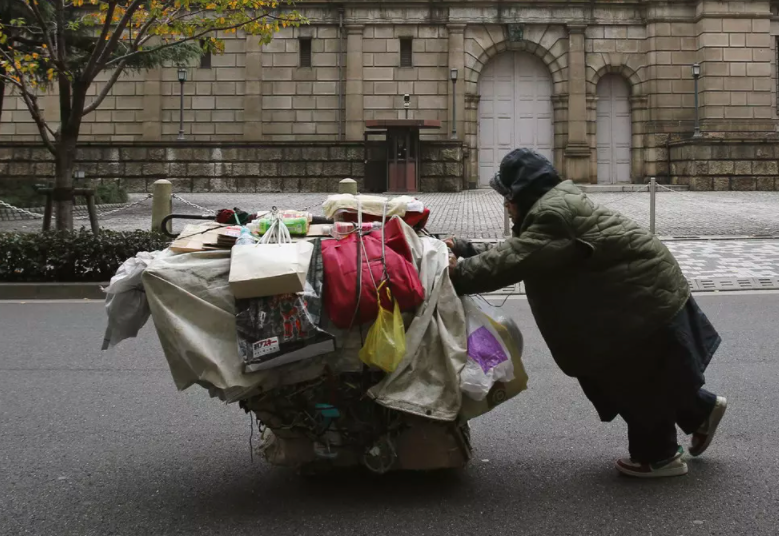
The diagram above indicates the relationship between Inequality and political, economic, and environmental aspects. Source: Journal of Epidemiology & Community Health.
During the COVID-19 pandemic, inequalities were challenging from healthcare to technology, ethnicity to income. A study in Germany emphasized the high level of inequalities in access to urban green spaces based on income, age, education, and the number of children in households. Similarly, access to health care was characterized by unequal distribution as reported by scientists. In Europe, the lowest income people had less access to healthcare, and women and migrant workers faced more difficulties. Additionally, the digital divide is another challenge encountered during the pandemic as many workers and students had to work remotely due to lockdowns, isolations, and social distancing rules. The technology gap with access to the internet in low-income households was impossible. In the United States, differences existed along with income, age, race, disability, and urban/rural localities. For example, according to Pew Research Centre, 15% of adults in rural declared not to use the internet, compared to 9% in urban areas. Furthermore, 8% of white people said the same, compared to 15% of black people. As a result, skilled workers could work remotely while lower-skilled workers lost their jobs hence increased dependency rates due to dropping of incomes at households.
“This is a virus that doesn’t respect borders: it crosses borders. And if it is in full strength in any part of the world, it’s affecting everybody else. Therefore, it requires global cooperation to deal with it.”
Gita Gopinath, Chief Economist at International Monetary Fund (IMF).

Addressing inequality in the COVID-19 era
The control measures taken to reduce the impact of COVID-19 have indirectly been socially and economically devastating, significantly set back efforts to achieve the 2030 Agenda of Sustainable Development Goals (SDGs) particularly Goal 1(No poverty), 2(Zero hunger), and 10(Reduced Inequality). The impacts differ between countries therefore, loans and investments for the recovery must consider appropriate measures on equitability, resilience, and environmentally friendly. Reducing inequality goes hand in hand with gender dimensions considerations. Gender-specific support is crucial for reconstruction and recovery to fulfill the needs of various groups. Building back better dimension – Source: OECD
The COVID-19 challenges have created an opportunity for policies and actions to address the issue. For instance, activists from the South African Food Sovereignty campaign are trying to have a Climate Justice Charter incorporated as an amendment to the countries’ constitution to “End Hunger, Thirst, Pollution and Climate Harm” Furthermore, campaigners from 350 Africa are calling for policy change to ensure a just recovery from the pandemic putting people’s health first, offering economic relief, creating resilience for future crises and building solidarity across borders”.

In addition, the building back greener initiative aims at mobilizing recovery funds to integrate climate and biodiversity concerns in COVID-19 response measures. Social justice and just transition are priorities with reduced poverty and inequalities through improved public support, housing, and jobs creation. The initiative goes in hand with gender dimensions, sustained green employment, and decent working conditions of vulnerable groups. Pandemic recovery enhance settlement – Credit: Reuters
Countries have been spending more money during pandemics resulting in more debts. Luckily, IMF approved debt service relief for countries already experiencing debt distress and promised more funds in the coming years. Moreover, IMF advised them to be innovative, raising revenues that could help in challenging times, and insisted that progressive taxation could be kind of. Nevertheless, World Health Organization (WHO) works hard to reduce inequalities in the distribution of vaccines, with more emphasis on delivering the vaccines to developing countries to keep the fight against the coronavirus and the emerging virus species.
Before the pandemic, climate change was one of the biggest threats that the world was experiencing. However, COVID-19 has worsened climate vulnerabilities by reducing the resources available to adaptation and focusing on addressing the pandemic. Therefore, global environmental emergencies such as climate change and biodiversity loss could cause social and economic damages caused by the pandemic. For this case, economic recovery packages must consider social, environmental, economic, and livelihood for better recovery. Some African countries have incorporated climate action in their evolving post-COVID-19 recovery plans. For example, Nigeria’s post-COVID-19 recovery plan aims to install home solar systems and mini-grids for 5 million households not currently connected to the national grid. The project will provide 250,000 additional jobs to cater to the unprecedented unemployment resulting from the COVID-19 lockdown.
Lastly, the pandemic has been a lesson and eye-opener to everyone as a terrific opportunity for proper plans for a better future. Thus, addressing inequalities may reduce poverty brought by COVID-19, stimulate economic growth, allow for bold decisions for forthcoming generations to thrive.
Click below sources of information for more reading
- https://blogs.worldbank.org/voices/Covid19-response-where-we-stand-now-and-road-ahead
- https://sumas.ch/five-inspiring-examples-of-a-green-recovery-from-Covid19/
- https://odi.org/en/insights/how-to-build-back-greener-in-the-Covid19-recovery/
- https://www.weforum.org/agenda/2020/06/Covid19-great-reset-gita-gopinath-jennifer-morgan-sharan-burrow-climate/
